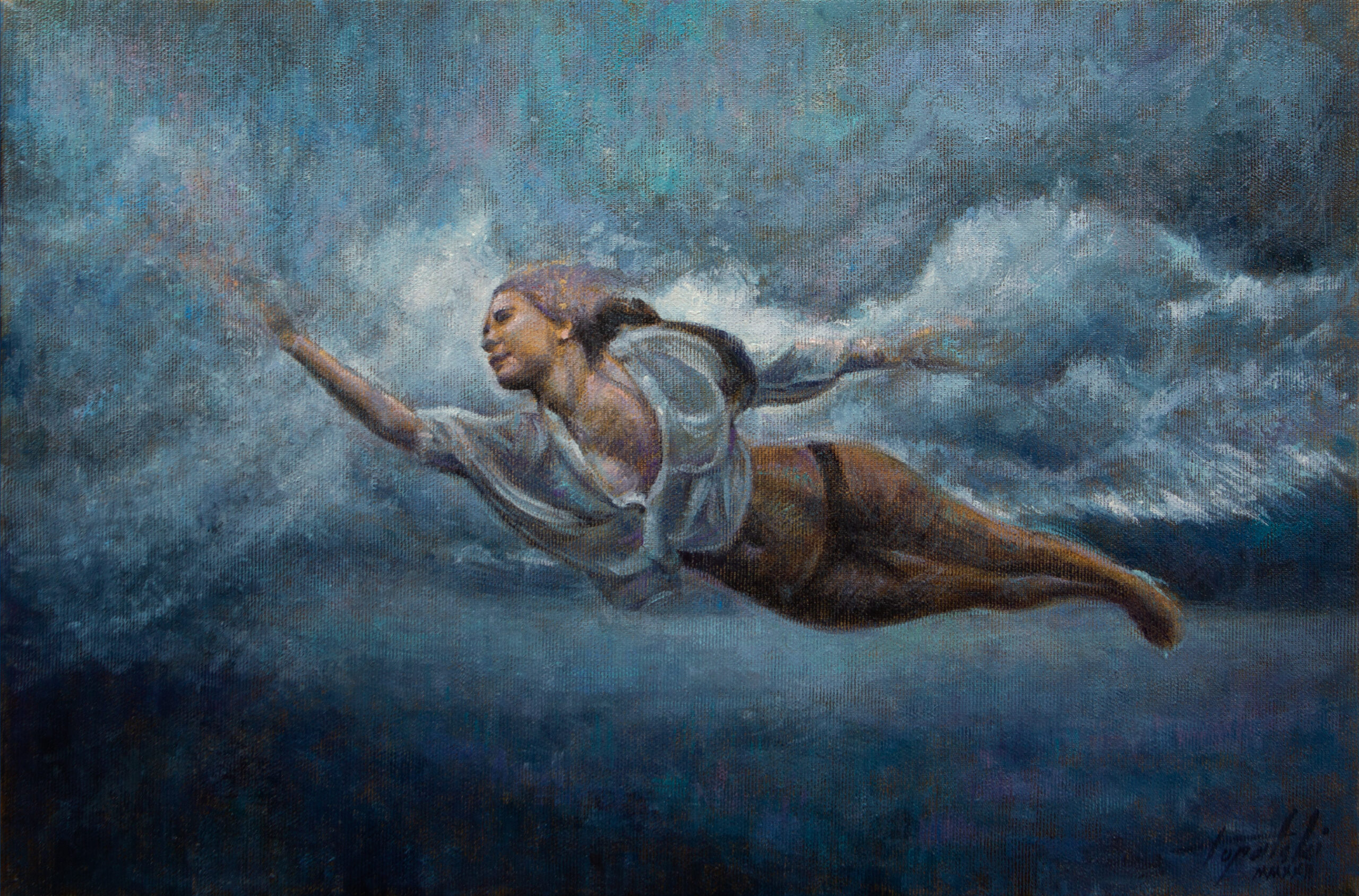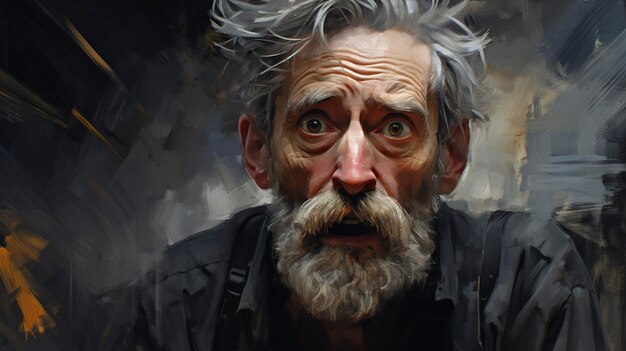A Journey With the Globe of Metaphorical Oil Painting: Discovering the One-of-a-kind Attributes and Emotional Depth of the Tool

Background of Figurative Oil Paint
Emerging during the late Middle Ages and prospering throughout the Renaissance, figurative oil paint has a rich background that shows both creative advancement and social evolution. At first, oil paints were used in Europe as a method to improve the brightness and deepness of shade in art work. Artists such as Jan van Eyck originated the medium, demonstrating its possible to catch detailed details and textures, hence allowing for a more natural depiction of the human type.
As the Renaissance progressed, prominent figures like Leonardo da Vinci and Michelangelo expanded the boundaries of metaphorical oil painting. They stressed physiological precision and point of view, developing works that shared emotion and narrative depth. The medium's convenience permitted trial and error with light and darkness, causing the growth of chiaroscuro methods that additionally enhanced the visual experience.
Distinct Attributes of the Medium
The evolution of metaphorical oil painting has been dramatically influenced by the unique qualities of the tool itself. Oil paint, made up of pigments put on hold in oil, supplies artists an amazing adaptability that enables a wide variety of coatings and structures. Its slow drying time makes it possible for careful blending and layering, which can produce deepness and luminosity unattainable in other tools.
Moreover, oil paint's rich pigmentation provides vibrant shades that preserve their strength gradually. This characteristic is important in figurative paint, where capturing the nuances of skin tones and emotional expressions is paramount. The capacity to attain refined gradients and soft shifts enhances the natural quality of subjects, permitting artists to communicate intricate moods.
Furthermore, oil paint adheres well to different surface areas, such as metal, canvas, and wood, expanding the extent of artistic expression. The medium's flexibility sustains various methods, from thorough realism to expressive brushwork, enabling musicians to discover their private styles.
Eventually, the special residential properties of oil paint not only enrich the aesthetic experience yet likewise empower artists to communicate profound narratives, making figurative oil paint a deeply expressive art kind.
Techniques and Styles Used
Within the world of metaphorical oil painting, artists utilize a diverse range of strategies and designs that add to the depth and richness of their job. One prominent technique is polishing, where clear layers of paint are used over dried layers, enabling light to pass through and show, enhancing luminosity and deepness. This Continued approach is frequently used to attain a sense of realism and complexity in complexion.
One more technique is impasto, where thick layers of paint are used with a combination knife or brush, creating a textured surface area that includes a three-dimensional high quality to the painting. This design can evoke a natural response, drawing the audience in through its responsive nature.
Musicians also discover numerous brushwork styles, from fine, comprehensive strokes that capture detailed functions to more comprehensive, more expressive strokes that share movement and emotion (figurative oil painting). The option of color palette dramatically affects the overall state of mind of an item, with warm tones frequently giving sensations of convenience and awesome tones suggesting moody
Furthermore, the integration of chiaroscuro, the contrast in between light and darkness, allows musicians to create remarkable effects that boost the narrative top quality of their job. Each strategy and style is thoroughly picked to boost the visitor's experience and understanding.
Emotional Deepness in Figurative Art
Psychological deepness works as a cornerstone in metaphorical art, enabling artists to go beyond mere representation and involve audiences on an extensive level. This psychological vibration is typically attained with the nuanced representation of human figures, expressions, and interactions. Artists harness the power of light, color, and darkness to stimulate sensations that resonate deeply with the audience, developing a visceral link to the subject.
In figurative oil paint, the intricate layering of paint can show the complexities of human emotion. The choice of combination, whether amazing or cozy, plays an essential role in setting the mood and atmosphere of an item. For instance, softer colors may evoke harmony and self-questioning, while vibrant, different colors can interact stress and drama.

Influential Artists and Their Functions
Numerous influential musicians have substantially shaped the landscape of metaphorical oil painting, each adding unique perspectives and methods that continue to inspire modern makers. Among these artists, Lucian Freud stands out for his extreme mental depth and raw representation of the human kind, typically blurring the lines between elegance and degeneration. Freud's works, identified by thick, impasto brushstrokes, welcome audiences to face the intricacies of identity and vulnerability.

Similarly, Andrew Wyeth's careful realism in items like "Christina's Globe" catches profound narratives within seemingly straightforward make-ups. His use light and darkness stimulates a feeling of fond memories and emotional vibration, drawing viewers into the intimate globes he portrays.
In the realm of contemporary art, Kehinde Wiley has gotten recognition for his vibrant, larger-than-life portraits that challenge typical concepts site link of depiction. By placing individuals of color in contexts similar to timeless portrait, Wiley's work redefines the canon of art history.
These musicians, along with others, have not only enriched metaphorical oil painting yet have actually additionally broadened the discussion bordering feeling, identity, and society, making sure that the medium continues to be a crucial type of expression in the art world. figurative oil painting.
Verdict
In final thought, figurative oil paint stays a powerful tool that encapsulates the complexities of human emotion through its rich pigmentation and flexible methods. The trip via figurative oil painting reveals its long lasting relevance in the art globe.
The exploration of metaphorical oil painting provides a profound understanding into the interaction of technique, feeling, and historical context that specifies this venerable tool. Oil paint, made up of pigments put on hold in oil, uses artists a remarkable versatility that allows for a broad array of appearances and finishes.Within the world of figurative oil painting, musicians employ a varied array of methods and styles that contribute to the deepness and richness of their work.Countless influential musicians have considerably shaped the landscape of metaphorical oil painting, each contributing unique perspectives and strategies go to this website that continue to motivate contemporary makers.In conclusion, figurative oil paint remains an effective medium that envelops the intricacies of human feeling with its rich pigmentation and functional methods.